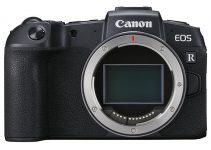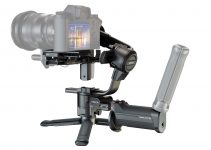Those of you shooting with both Sony and Canon cameras know well that matching colors (particularly skin tones) in post captured on devices belonging to those two brands could be a daunting task that’s often impossible to overcome. Luckily, US-based wedding videographer Grant Pichla claims that he has come up with a feasible solution.
For a small fee of $10, you can get his custom LUT along with a comprehensive tutorial that includes the actual workflow built from scratch containing all data values that will help you to sort things out and match Sony to Canon colors making them look almost identically.
And, the best part is that this workflow doesn’t require any additional plugins or even the latest versions of the three most commonly used NLEs – Premiere Pro CC, Final Cut X, and DaVinci Resolve.
It’s also worth noting that you need to utilize the PP8, Cine 4, S-Gamut picture profile on your Sony a6300, Sony a6500, or Sony A7 Series camera to make this work. To have the desired effect, Grant Pichla used the same lens and adjusted each clip’s RGB channels based on a color chart. However, this process required more than just adding and subtracting color data. Instead, it has a lot to do with transforming the way each pixel is represented. After making the match, he tweaked the settings over time to better lean towards the Canon skin tones as the color chart match wasn’t enough.
Here’s what else Pichla has to say on the topic:
Basically, each pixel in an image holds a certain amount of Red, Green, and Blue. Instead of adding a bit of Red or subtracting Blue from every single pixel using curves, levels, color wheels (for example), my process tells a pixel to display some of it’s Red data as Blue. And it tells the Blue pixels to accept more Green. And etc. for the entire shot. It’s like looking at a red apple and saying “the pixels representing this red apple should be displayed at 65% red, and these red pixels should also be 20% blue and 15% green, not just 100% red.” And sometimes the greens need to be displayed 140% green and 40% less blue, etc.
All in all, this effect only adjusts the colors of the pixels, so your exposure adjustments in post should not have an effect on it. It would be great to see more side-by-side comparisons between the two cameras that unfortunately are not included in this particular video, but Grant says he has another tutorial in the making that explains the actual process in greater detail.
Considering the price of the provided assets along with the final result you can get, this solution is certainly a no-brainer. However, if you’re not completely sold on the idea, you can learn more about the actual workflow by visiting Grant Pichla’s site by using the following link.
[via: Cinescopophilia, source: Grant Pichla]
Disclaimer: As an Amazon Associate partner and participant in B&H and Adorama Affiliate programmes, we earn a small comission from each purchase made through the affiliate links listed above at no additional cost to you.




I was just googling this very thing last night! I love Canon’s colors, but their recent cameras just aren’t doing it for me, video-wise, since I can get more features in a cheaper package from Sony. However, the biggest thing I was missing was the lovely warm tones of Canon.
I imagine there has to be a way to apply this workflow to a Sony FS7.
Hi James – Grant here – I’m 99% sure it will work with the FS7. Feel free to send over a clip to my gmail and I can give it a test for you: [email protected]
Please note that it works best when shooting in Cine4. Any white balance or ISO will work equally as well.
Having purchased this, I can say that it’s not a LUT. In fact, it’s a single, common color effect already found in your NLE. However, he did spend some time figuring out specific settings within that effect, but it’s that simple. When finding a solution to a common problem, one is faced with a decision- to put up a free tutorial and become and ‘internet hero’ or to charge money for it. I support the idea of both options, and I realize that plenty of time was put into finding the right settings, but this seems more like something so simple that a free 2 minute tutorial would cover. To be honest, I don’t mind paying, but I feel like the $10 price tag should be more like $5.